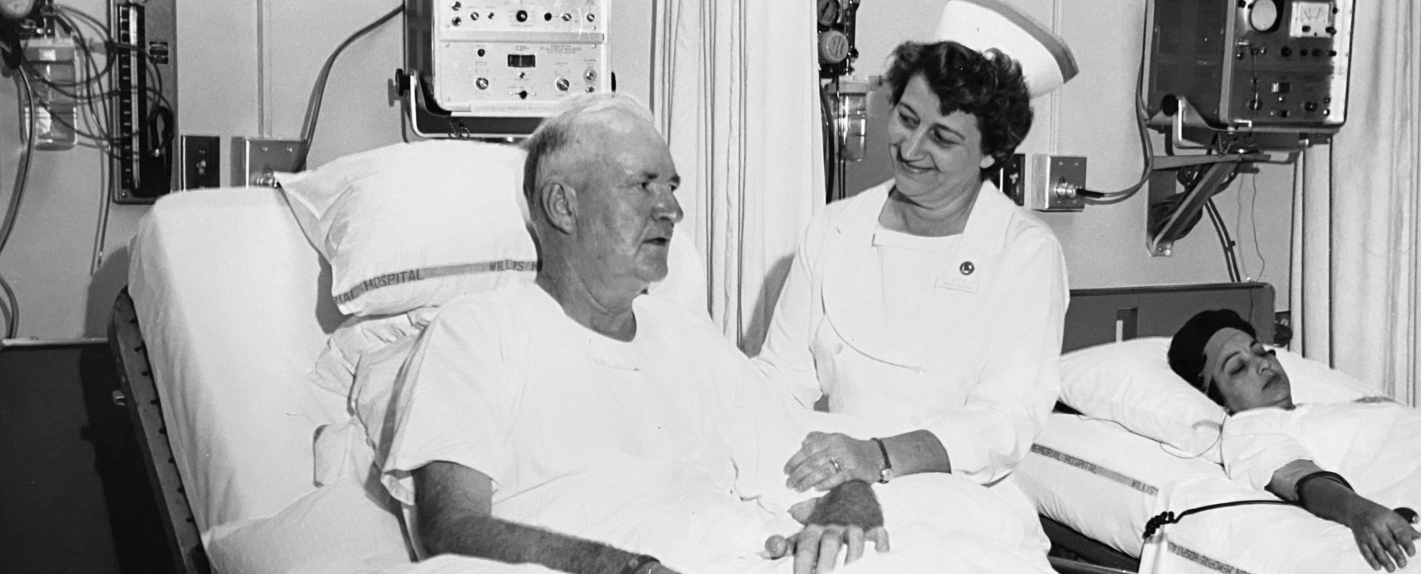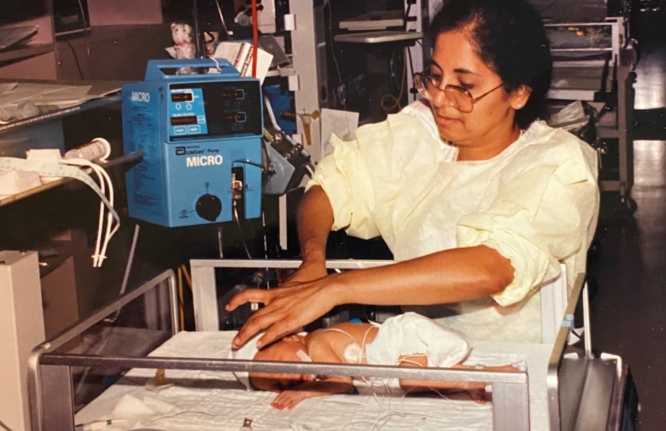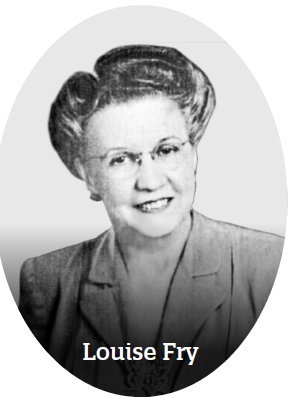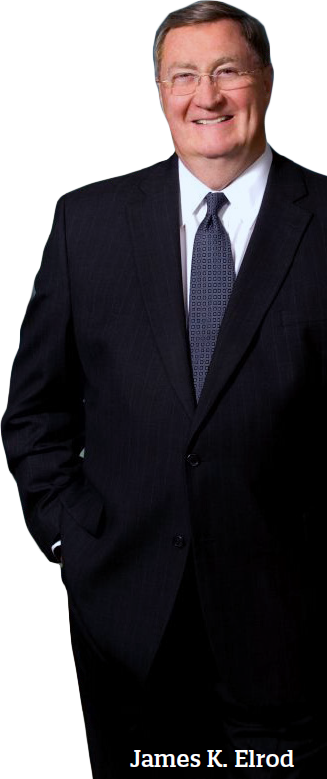
Willis Knighton Mission Unchanged
One hundred years.
Over the past century, Willis Knighton Health has embodied the old French proverb – “The more things change, the more they stay the same.”
What began as Tri-State Sanitarium on the corner of Greenwood Road and Virginia Avenue is now the largest healthcare provider in northwest Louisiana. Willis Knighton Health has grown into four acute care hospitals, a rehabilitation institute, four suburban clinics, well over a hundred physicians clinics, an innovation center, and specialty centers for areas like heart, cancer and eye surgery. Add to that The Oaks of Louisiana, the state’s largest retirement community.
Yet, with all of its expansion and its vast resources, Willis Knighton remains locally owned and operated. It demonstrates a strong culture and commitment to its mission to improve the health and well-being of the people in northwest Louisiana. As a 501(c)3 nonprofit charitable organization, Willis Knighton reinvests revenue earned into services and facilities that address healthcare in our community. Members of its board of trustees all live and work here. That means decisions are made by people who have deep local connections.
“When you look at Willis Knighton, it is amazing to realize that it is a local company started by local doctors and it has continued to be local doctors serving a local community. It has been the dominant medical player in Shreveport-Bossier for most people’s lifetime,” says Tim Magner, president of Greater Shreveport Chamber of Commerce. “The fact that it was built here by people who lived here and who grew up here is really amazing for the size, scope and scale that Willis Knighton has achieved.”
“I share the commitment and the desire to be what we’ve always been – homegrown, local and serving people in this area,” says Jerry A. “Jaf” Fielder, II, Willis Knighton Health president and CEO. “I think a lot of organizations lose their way by trying to be bigger than they should be.”

Healthcare arrives in Shreveport suburbs
It’s doubtful that Drs. T.E. Williams and L.H. Pirkle, the founders of what is today Willis Knighton Health, could have envisioned in 1924 that Tri-State Sanitarium would be the forerunner of one of the state’s leading health organizations. Now, a hundred years later, their 85 bed hospital in the west Shreveport suburbs has 7,200 employees and locations throughout the community.
Years after the hospital was opened, Drs. Williams and Pirkle sold Tri-State Sanitarium to Drs. James C. Willis, Sr., and Joseph E. Knighton. Drs. J.C. Willis, Jr., and William Kerlin joined them in managing Tri-State Hospital, which continued to be referred to as Tri-State Sanitarium. In 1949, it became a not-for-profit healthcare organization and one year later was named in memory of Doctors Willis and Knighton.
Pierre “Pete” Blanchard, MD, believes the hiring of 27-year-old James K. Elrod was the first significant move that heralded the hospital’s major expansion. Dr. Blanchard, an internist at Tri-State Clinic and Willis Knighton for more than 50 years, has witnessed that growth, both as a physician and as a member of the board of trustees.
Starting a career and ending it at the same institution is unique in the hospital administration world. Elrod would become the longest tenured hospital administrator in the United States before his retirement in 2021. And under his administration, Willis Knighton became the largest nongovernmental employer in the area, providing comprehensive healthcare services, innovation, and a community-focused philanthropy philosophy, all contributing to the health system’s success.
“With Mr. Elrod’s expertise, especially as a visionary, Willis Knighton made rapid strides in its size and number of patients as well as dedicated physicians,” Dr. Blanchard says.
Growth through the years has been considerable. Both Dr. Blanchard and pediatrician Dr. Frank Hughes, chairman of Willis Knighton’s board of trustees, have witnessed the evolution of Willis Knighton from a small neighborhood hospital into a major healthcare provider.
What has helped Willis Knighton achieve the status it has today? Here are a few highlights mentioned by these long-time doctors:
• Physician-centered philosophy. Willis Knighton has a broad range of skilled physicians and gives them the support they need to care for people.
• Technology. From the time it opened the organization has emphasized new technology and brought those to the community.
• Central locations for complex care. Performing the most complex care daily allows teams to provide better outcomes (as opposed to teams that treat complex issues only occasionally).
• Satellite focus. Willis Knighton opened the first satellite hospital in the state in 1983. This moved healthcare into the neighborhoods close to people's homes and work, giving easier access to healthcare.
• Urgent Care network. Access to care expanded with the addition of Quick Care clinics that offered extended hours for minor illnesses and accidents.
• Neonatal intensive care. The NICU at Willis Knighton was one of the first of its kind in the nation, with individual rooms to promote bonding and transfer available by ambulance or helicopter. This serves not only local patients but patients from throughout the region.
• Continuum of care emphasis. The addition of skilled nursing and senior residential options assures that Willis Knighton can provide a lifetime of care.
• Graduate medical education. An emphasis on graduate medical education helps to attract young doctors to our community, supporting medical care for the future.
• Dedication to employees. Understanding the importance of its employees in delivering care and services, Willis Knighton has provided not just a job but many resources and opportunities for its employees. From salaries to educational advancement and even a guaranteed company-funded retirement plan, Willis Knighton is recognized for its dedication to its staff. This engenders a high level of loyalty, with many employees staying at WK for decades, if not for their entire careers.

How does Willis Knighton identify where new services are needed? Fielder points to community health needs assessments that have been the impetus for growth in recent years. These resulted in a suburban clinic model at Palmetto, Stockwell, Swan Lake and Northwood. Placing clinics in these locations gave growing populations quick, easy and convenient access to primary and urgent care, Fielder says.
As Willis Knighton has grown, so has its philanthropy. Through its “tithe the bottom line” philosophy of giving, it donates a minimum of 10 percent of profits back into the community each year to support worthy community organizations, projects and activities.
“We decided in the 1970s that because we are a local institution and have been financially successful, we needed to give back to our local economy, supporting organizations that support our mission,” Fielder says. “Tithing our bottom line sets us apart from other organizations in this region.”
The major focuses of Willis Knighton’s philanthropy are healthcare, public education and humanitarian services. Combining healthcare and education, Willis Knighton has donated more than $170 million to LSU School of Medicine over the years to train physicians and allied health professionals.

It has also provided scholarships and contributions to local universities to train nurses. Its sports medicine program helps ensure good health and support for high school athletes. Understanding the importance of helping the less fortunate, its humanitarian services contributions have provided support for organizations like the Food Bank of Northwest Louisiana, Holy Angels, Providence House and the Salvation Army Boys and Girls Clubs, to name just a few. To enhance quality of life in our community donations have been given to support local fire departments and law enforcement organizations as well as to organizations that uplift the spirit of residents, from the symphony to the opera to local ballet and theater groups. Employees particularly enjoy the Paint Your Heart Out Shreveport program, which includes not only a monetary donation but allows them to volunteer to paint homes of elderly or disabled residents.

Enhanced equipment and technology
While the tithe is an important initiative for the community, most of WK’s earnings are reinvested into making healthcare better for its patients. This is evidenced by its enhanced equipment and technology, including a major investment in a new electronic health record program to increase clinical efficiency for physicians and staff and provide care and offer patients easy access to their medical information.
One current project of which the WK team is especially proud is the donation of land for the Ronald McDonald House scheduled to open next year. The house being constructed on the campus of Willis Knighton South will offer a free place for families to stay while their children receive care at any local hospital. Families receive lodging, meals and support during their child’s hospitalization. It is the first Ronald McDonald House in northwest Louisiana.
Emphasizing Willis Knighton’s ongoing community service, Fielder explains, “The Ronald McDonald House is part of our mission, to continuously improve the health and well-being of the people we serve.”
One hundred years of care and one hundred years of caring. Since 1924 the mission of Willis Knighton has not changed.

100 Years, 3 Leaders: Leaving Their Mark

With the average tenure of a hospital administrator just over five years, it is quite remarkable that Willis Knighton Health has only had three during its 100 year history.
Louise G. Fry, a certified nurse anesthetist and supervisor of nurses, became administrator of Tri-State Hospital in the late 1920s and served in that position until she helped to hire the next administrator in 1965.
James K. Elrod , 27, assumed the position with the support of Mrs. Fry, who had a terminal illness. A native of Texas and graduate of Baylor University, he served in the U.S Air Force following college and then entered Washington University School of Medicine to study hospital administration.
The first local administrator with graduate training and a residency, Elrod would stay in the job for 56 years, becoming the longest tenured hospital administrator in the nation before he retired in 2021. He left to his successor, Jerry A. “Jaf” Fielder, II, a healthcare organization that recognizes the importance of
• delivering high quality, accessible and financially sustainable healthcare
• improving not only the health but the quality of life for the people of northwest Louisiana
• being a good corporate citizen through WK’s tithe-the-bottom-line philosophy
• advancing medicine strategically by focusing on community needs and how Willis Knighton can meet those needs
New leader, same mission
Fielder was no stranger to Willis Knighton. He was a trusted and integral part of the Willis Knighton family. He began his career with Willis Knighton at age 23. He led the human resources department for 24 years and held multiple senior level positions within the organization, including chief operating officer, senior vice president and administrator of Willis-Knighton Medical Center, now Willis Knighton North.
“Leading a healthcare organization that includes four acute care hospitals, a rehabilitation institute, an extensive multispecialty physician network and the state’s largest retirement community is a tremendous responsibility,” Fielder says. “We have a great management team in place.”
No doubt many agree.
Board of Trustees Chairman Frank Hughes, MD, remembers it was obvious to the board that physicians and staff consider Fielder a trusted colleague and dedicated leader. He notes Fielder has been an integral part of the success of Willis Knighton, success that is rooted in taking care of doctors and employees, delivering the best outcomes and continually learning new things – all to improve the health and well-being of the people of northwest Louisiana.
There were no mass layoffs, no one was fired, no mass exodus of top level leaders that often occurs with corporate leadership transitions.
“We just swapped people and kept going with the strategy (Elrod) indoctrinated into all of us, me included,” Fielder says.
Continuity of leadership is a good thing.
Fielder acknowledges many people would have eagerly accepted the role as president and CEO for what Willis Knighton brings to the table. The health system is financially sound, has a stable workforce and great physician base, “but to follow somebody who has a 56-year legacy here … those are big shoes to fill,” he says.
Change is a part of life, and the healthcare organization is celebrating its 100th anniversary this year. In preparation, earlier this year Willis Knighton refreshed its logo to signal its journey into the future. The word “system” was dropped from the name to focus attention on what the organization does – health.
While the logo has changed, the heart and core values that have helped Willis Knighton reach the century mark have not. Fielder is quick to acknowledge those core values will take the organization into the next 100 years.
 "Our mission has always been northwest Louisiana. It's not been to try to merge with or acquire other hospitals across the state or region to expand,” Fielder says.
"Our mission has always been northwest Louisiana. It's not been to try to merge with or acquire other hospitals across the state or region to expand,” Fielder says.
Large hospitals often expand into new territories, he says. Willis Knighton takes pride in being local instead of some out-of-town national corporation. It is 100 percent owned and operated with its major responsibility being healthcare in northwest Louisiana and the tri-state region.
In terms of healthcare, Willis Knighton’s impact has been substantial, not only in providing direct care but helping to educate the next generation of healthcare providers, says Tim Magner, president of Greater Shreveport Chamber of Commerce. “The breadth of care Willis Knighton provides is critical to the health of this region. Beyond that, Willis Knighton has been a tremendous community partner, which speaks volumes to the role it plays as a foundational community member and a bedrock in this area.”
Building on remarkable foundations
The growth of Willis Knighton from a small neighborhood hospital to the largest healthcare provider in the region is the legacy of James K. Elrod. It is a remarkable foundation for Fielder to build upon and move forward into the next 100 years.
“I was lucky enough to be in the inner circle and be part of the WK team responsible for the growth of WK,” Fielder says. He considers the years under Elrod’s guidance and mentorship a blessing.
“When you look at Mr. Elrod’s legacy and you see the system he built, you see the large footprint of the organization that we know today,” Magner says. “Certainly Mr. Fielder being part of that growth and now in charge of the next phase speaks to the quality of leadership that has enabled Willis Knighton to grow and expand its services and to be … the leader at the forefront of healthcare delivery and innovation.”
Willis Knighton has always been a leader in healthcare, with many “firsts” in the city, state or region, and sometimes even the nation or the world.
1965 – Intensive Care Unit (ICU) (region)
1969 – Home health care agency (region)
1973 – Private hospital with full-time physician staffed ER department (city)
1974 – High frequency technology for cataract removal (region)
1975 – Nuclear powered pacemaker (city)
1975 – Lens implantation (eye) (city)
1975 – Automated radioimmunassay (RIA) (nation – private hospital)
1980 – Hospice program (city)
1982 – Micra AV pacemaker, world’s smallest pacemaker (region)
1983 – First satellite hospital in Louisiana - South Park Hospital; now Willis Knighton South (state)
1988 – First freestanding eye surgery facility (region)
1989 – Center for Women’s Health, dedicated to women and children’s health (region)
1990 – Regional Transplant Center with LSU Health Sciences Center (region)
1991 – Mechanical heart transplant (region)
1992 – Living donor living transplant procedure (state)
1992 – Hyperbaric chamber (region)
1993 – Heart stent procedure (region)
1995 – Project NeighborHealth medical and dental clinic for underserved populations (region)
1997 – Minimally invasive heart surgery (state)
1998 – Hospital-based wellness center in disadvantaged neighborhood (WK Community Wellness Center on Pierre Avenue) (region)
2000 – Cancer Center with all services under one roof (region)
2000 – Quick Care (hospital affiliated urgent care) (region)
2003 – Drug coated heart stents (region)
2003 – TomoTherapy image guided radiation therapy (state)
2005 – Orthopedic and sports medicine center of excellence (region)
2010 – The Oaks of Louisiana – first hospital owned and operated complex (state)
2014 – ProteusONE, first compact IMPT proton therapy (world)
2017 – TCAR Artery Revascularization (state)
2017 – First ReLEx SMILE Procedure for vision correction
2017 – MRI-guided Visualase® laser ablation performed on patient with brain tumor (region)
2021 – Shockwave coronary lithotripsy (region)
2022 – Intravascular lithotripsy procedure using the Shockwave M5+ catheter (state)
2022 – Nonsurgical removal of aortic valve tumor (world)
2022 – Focal One™ noninvasive robotic focal HIFU (high intensity focused ultrasound) to treat localized prostate cancer (region)
2022 – Advanced cardiac imaging specialist with expertise and consultation to assist other cardiologists in determining treatment options for patients with complex diagnoses (region)
2022 – VELYS™ Robotic-Assisted Solution, robotic technology for knee replacement surgery (state)
2023 – HipInsight™ System, the first FDA approved augmented reality (AR) guidance platform for joint replacement (region)
2023 – PLUVICTO™, a radiopharmaceutical treatment for precision targeting of prostate specific membrane antigen (region)
2023 – Minimally invasive spine surgery with ExcelsiusGPS®, with robotics and navigation (city)
2023 – Aquablation® minimally invasive robotic treatment for patients with benign prostatic hyperplasia (state)

Technology Advances to Patients in Our Region
Living up to the promise to improve our community’s health and well-being, Willis Knighton has brought this region some of the nation’s most advanced medical technologies. Having technology close to home means residents don’t have to travel to get access to leading edge advancements.
One hundred years ago, the opening ad for the new Tri-State Sanitarium heralded “Latest Scientific Equipment,” and that included the era’s modern “Victor X-Ray Equipment.” Today Willis Knighton continues to bring equipment advances to people in the tri-state region.
Because Willis Knighton is a technology leader, companies often bring advanced products to WK first, knowing we have not only a commitment to purchasing technology but have a full range of skilled physicians who can demonstrate their technology’s capabilities.
Not only does Willis Knighton have exceptional technology, it has it in multiple locations. This helps to ensure the technology is readily available when patients need care.
What does technology mean to doctors? It complements their diagnostic and treatment capabilities, allowing them to better care for their patients. How? Early identification of problems. Fast, efficient treatment. Quicker return to normal for patients. Detailed analysis and planning.

An eye for technology
Consider the advancements in eye surgery. Just 50 years ago, pen-sized scalpels were the gold standard in the eye surgical suite. Innovation has brought physicians new tools with superior outcomes and shorter recovery times due to laser precision.
One doctor responsible for many advancements of today’s eye technology is Christopher Shelby, MD, senior physician at WK Eye Institute. He followed in the footsteps of the late Dr. William Steen who was a visionary leader in eye surgery diagnostics and technology at Willis Knighton.
“Over the past two decades, I’ve seen significant shifts,” said Dr. Shelby. “We’ve moved from mechanical procedures to laser precision in the operating room, much like the transition from analog to digital.”
Dr. Shelby and partner Wyche T. Coleman, III, MD, introduced laser assisted vision correction technology, LenSx®, to the Ark-La-Tex as early as 2015. This technology offers blade-free cataract surgery with custom lens implants. LenSx® uses real-time, laser-guided imaging that enables eye surgeons to make highly accurate incisions with quicker healing and better visual outcomes.
“Since bringing LenSx® to our practice, I’ve noticed not only improved patient safety, but amazing improved visual outcomes,” Dr. Shelby said.
The Eye Institute has been responsible for many “firsts” in this region, including cataract surgery, LASIK vision correction, and treatment of glaucoma and macular degeneration.
 World class radiation oncology
World class radiation oncology
One of Willis Knighton’s most exciting technology advances is Willis Knighton Cancer Center’s addition of Proteus®ONE to offer cancer patients one of the most advanced types of cancer treatment. It is the only location in Louisiana with this advanced treatment option. Proton therapy was brought here due to significant advances made in cancer treatment by Willis Knighton radiation oncologists and physicists, which resulted in international attention. The focus in radiation oncology is to offer precision targeting of tumors that minimizes radiation to surrounding tissues and side effects.
With three linear accelerators, a PET scanner and other advanced equipment, Willis Knighton truly provides world class radiation oncology technology for patients.
“As the first site worldwide to use both Proteus®ONE and Radixact® with ClearRTTM, along with next generation sequencing and advanced clinical research, Willis Knighton Cancer Center rivals leading cancer centers across the U.S.,” said Lane R. Rosen, MD.
At the heart of technology
Leading edge technology helped propel Willis Knighton into its position as the region’s leading heart program. In fact, an entire building – the Willis Knighton Heart & Vascular Institute – was developed to house an expansive heart program with 12 cath labs systemwide, the first hybrid surgical suite and a full array of sophisticated heart equipment. From technology for minimally invasive heart surgery to tiny heart pumps to high resolution diagnostic capabilities to treatment of valve disease – doctors have access to leading technology.
Together with heart technology, the technology for vascular, endovascular and neurovascular surgery allows for less invasive procedures. One of the most recent acquisitions this year is a neurovascular biplane that offers 3D views of blood vessels in the neck and deep within the brain. This technology is used for highly specialized procedures to treat aneurysms and perform thrombectomies.
Given the heart technology at the original North location and now, at multiple WK locations in Shreveport and Bossier City, patients can have confidence knowing that, at Willis Knighton, their heart is literally in the right place.
Making diagnosis more accurate
Diagnostic equipment is often the key to accuracy of medical intervention. The selection of diagnostic imaging equipment throughout Willis Knighton is impressive. It includes 10 CT scanners, 8 MRI units (including a 3.0 Tesla MRI) and five locations with 3D mammography, including a center for advanced breast diagnostics.
Today, doctors can view imaging on a desktop or tablet by accessing archival software that makes the images available quickly. Real time reporting capabilities get results to the right place quickly.

Robotic assistance advances surgery
Willis Knighton has elevated robotics to the highest standard in the region. Surgeons have access to nine da Vinci robotic assisted surgical units, as well as robots for orthopedic and spine surgeries. These units also allow simulation training of physicians in the surgery residency programs.
Surgeon Kamel Brakta, MD, uses robotic technology not only for general surgical procedures but bariatric patients as well. “Robotic surgery has truly revolutionized surgical care nationwide. It has significantly enhanced the surgeon’s ability to perform complex operations like weight loss procedures,” he said. Dr. Brakta notes that this offers “minimal invasiveness and greater precision than ever, resulting in much improved outcomes for our patients.”
A continuing commitment
While technology is found throughout the service lines detailed above, it doesn’t stop there. Advanced technology is found in equipment used for rehabilitation, treatment of wounds with the region’s only 12-person hyperbaric unit, and the use of continuous glucose monitors for patients with diabetes, just to name a few. Whether large equipment or small, it’s clear that Willis Knighton remains committed to making health and quality of life better for doctors and the patients they serve.